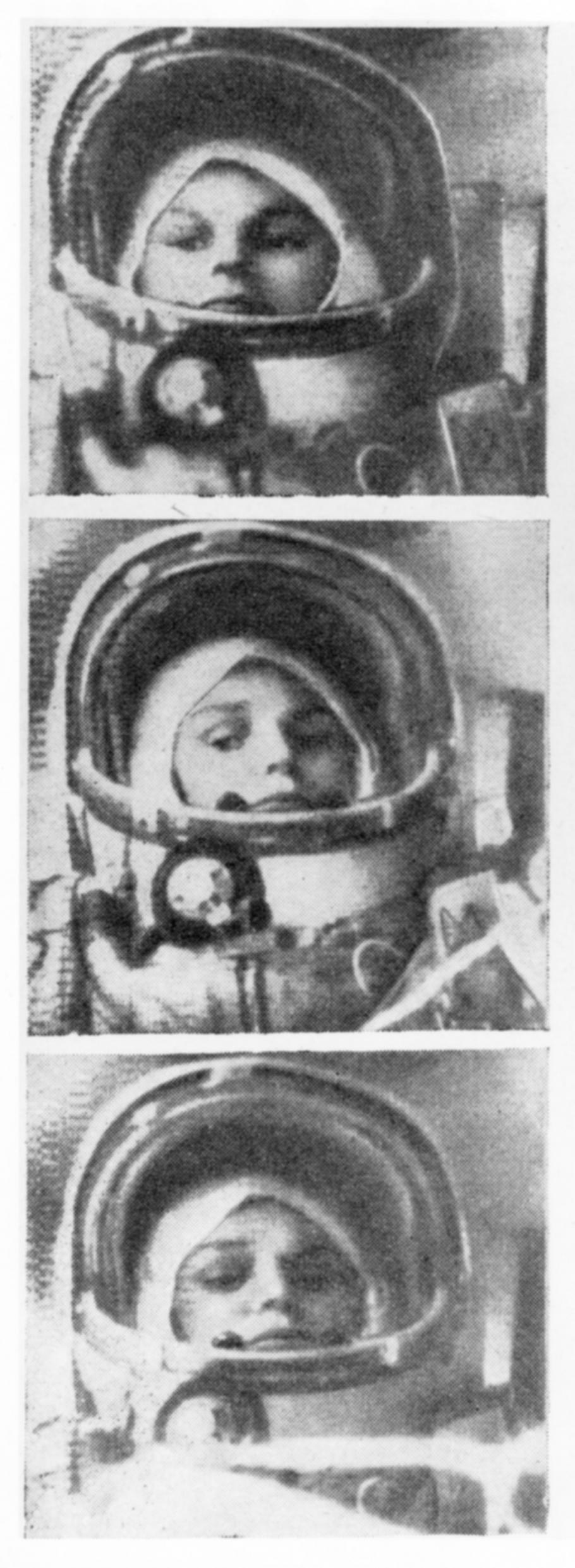With March upon us, the calls start coming for information about women in space. March is Women’s History Month and those of us trained as women’s historians know that our topics have particular currency in the third month of the year. But for women in space, the month to celebrate really should be June.
Fifty years ago, on June 16, 1963, the Soviet cosmonaut Valentina Tereshkova became the first woman to fly in space. Tereshkova was chosen from a group of five women who had been selected and trained as possible cosmonauts in the Soviet Union. Her expertise as a skydiver and her personal and family background (her father was a war hero) aided her selection to fly in space. Launched as the sole occupant of Vostok 6, Tereshkova orbited at the same time asVostok 5, marking the second time that two human spaceflight vehicles were in space at the same time. Her mission lasted just less than three days (two days, 23 hours, and 12 minutes).
Twenty years later (almost to the day), on June 18, 1983, which is exactly 30 years ago this year, Sally Ride became the first American woman in space aboard the Space Shuttle Challenger (STS-7). She flew with four other crew members on a six-day mission that included launching two communications satellites. After earning her Ph.D. in physics at Stanford University, Ride applied to be an astronaut and was selected in 1978 as a part of the first NASA astronaut candidate class to include women and people of color. (Five other women also became astronauts in that class: Anna Fisher, Shannon Lucid, Judith Resnik, Rhea Seddon, and Kathryn Sullivan.) Ride’s distinguished career with NASA included two spaceflights, service on the Rogers Commission after the Challenger disaster in 1986, and founding NASA’s Office of Exploration.
Finally, last year, in 2012, again in June (on June 16, exactly 49 years after Tereshkova), Liu Yang became the first female taikonaut to fly into space when she, along with two male crewmates, participated in a thirteen-day mission to dock, both manually and robotically, with China’s prototype space station. As the third nation in the world to launch human beings into orbit, China has flown four crewed missions: its first human mission in 2003, a two-person flight in 2005, its first spacewalk in 2008, and the first crewed orbital docking (in which Liu participated) in 2012. As it did for the Soviet space program in the early 1960s, including a female flyer in a mission drew attention to the program.
Although the inclusion of women in spaceflight is only one part of the broader history of women in aerospace, space travelers serve as the public face of their organizations and thus have symbolic importance in addition to their real contributions.
In the United States, the factors affecting the number of women in space tend to be related to the “pipeline” of experience, schooling, and training required to fulfill those positions. In the early years of the space race, when astronauts were drawn primarily from the ranks of military-trained jet test pilots, women —who were excluded from military flying from the end of the Women Airforce Service Pilots in 1944 until military flight training was reopened to women in the early 1970s—did not have the military jet test piloting experience to be considered. (A group of talented women pilots did undergo some private astronaut testing in 1960, but the Lovelace Women in Space Program ended abruptly in 1961.) The introduction of the Space Transportation System or “Space Shuttle” also introduced a new type of astronaut: the mission specialists, who were researchers with advanced scientific or technical degrees. The first American women astronaut candidates announced by NASA in 1978 were drawn from an applicant pool that included a greater proportion of women with terminal research degrees (Ph.D.s or M.D.s) than had previously existed.
Although Women’s History Month will be over at the end of March, we will revisit this particular history in June at the Museum. Three curators in Space History are planning an informal series of lunchtime talks, done as a part of the Museum’s weekly “Ask an Expert” series, explaining the history of these women’s achievements. After all, pioneering women deserve attention, even if it is not March.

